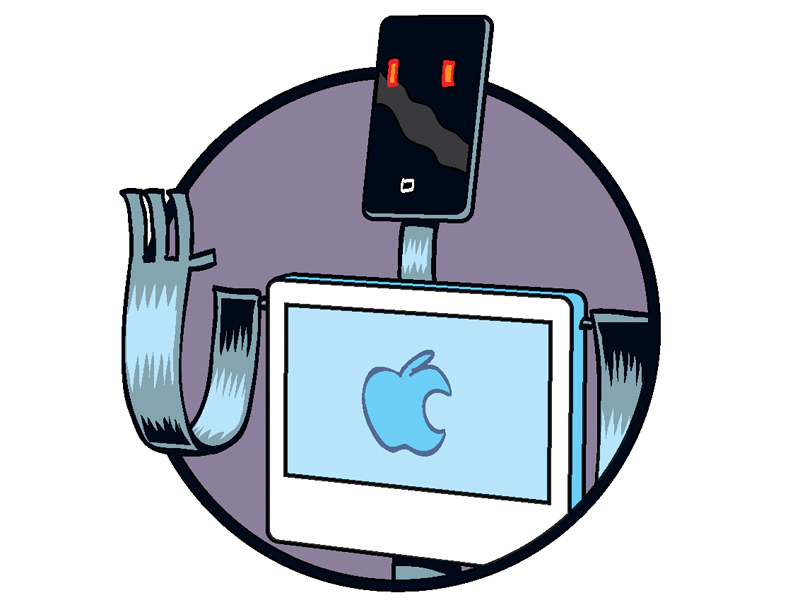Cool tech destined for Apple's next-gen Macs
What to expect from the Macs of tomorrow

Apple is notoriously tight-lipped about future intentions.
But by keeping a close eye on the emerging technologies of today, we can get a pretty good idea of what to expect from the Mac of tomorrow.
Superspeed USB
Let's face it, FireWire will soon be dead. Apple has dropped it from its latest MacBooks, and it seems unlikely to last much longer in the rest of the Mac range.
The future belongs to USB, and its next generation, USB 3.0. USB 3.0, also known as SuperSpeed USB, was unveiled at the Intel Developer Forum in 2007 and announced as specification-complete last year.
Its new bus offers data transfer rates up to ten times faster than USB 2.0, and it's backwards-compatible with devices using the older protocol. SuperSpeed USB is expected to achieve transfer speeds of 5Gb/s, against 2.0's maximum of 480Mb/s.
It's been estimated the first USB 3.0 products will appear in 2010, with hard drives, digital audio players and digital cameras being first to take advantage of the new SuperSpeed connectivity.
Get daily insight, inspiration and deals in your inbox
Sign up for breaking news, reviews, opinion, top tech deals, and more.
Multi-touch Macs
Although it's been around for decades, the touchscreen has enjoyed a renaissance over the last few years, with devices such as the iPhone and Microsoft's Surface tabletop device. And if patents taken out by Apple are anything to go by, Multi-touch touchscreen technology could soon make it to the Mac.
As analyst Gene Munster of investment bank Piper Jaffray said last year: "Looking into 2010, we expect Apple to advance its touchscreen technology to a complete MacBook touch with touchscreen keypad features." A tablet-format Mac, or maybe a MacBook with a swivel-screen, seems almost inevitable.
But desktop machines with a touchscreen could also be on the cards. Windows PCs with this feature are already appearing, such as the Dell Studio One 19, HP TouchSmart and Asus EeeTop. With touchscreen functionality built into Windows 7, Apple could soon be playing catch-up. Apple has denied it's taking touchscreens to the desktop Mac.
According to Steve Jobs, "Multi-touch makes a lot of sense on the iPhone, but not so much sense on an iMac. Consider it a research project." But then, he denied Apple was working on a video iPod right up until the moment it was released.
Cloud computing
To date, cloud computing has produced more headlines than success stories, but we expect it will come into its own over the next few years. The signs are certainly there. Apple's MobileMe service is growing in popularity, especially with those who want to synchronise contacts, calendars and more across multiple machines.
Services such as Carbonite Backup allow you to back up your system to an online data centre, and Adobe Integrated Runtime (AIR) makes it straightforward to develop crossplatform online applications. The future will certainly see an increasing number of desktop apps reach for the clouds.
For example, Apple's iWork '09 has already spawned an online subscription-based service. iWork.com is currently in beta, and allows you to upload, share and collaborate on (but not edit) documents created in iWork '09. Microsoft's forthcoming Office 2010 (and presumably the inevitable Mac version, Office 2011) offers 'lightweight versions' of its component apps for use online.
Cloud computing is in its infancy, but over time more and more applications will make use of the cloud model, especially for collaborative projects and synchronisation.
Snow Leopard: OS X 10.6
The next version of OS X is almost ready for release, and could well have been announced by the time you read this. OS X 10.6 Snow Leopard doesn't add much more in the way of major new features, but instead it concentrates on delivering improved speed and performance.
Snow Leopard is optimised for multicore processors, with a collection of technologies labelled Grand Central, which will make it far easier for developers to create third-party applications that take advantage of multiple cores.
OpenCL (Open Computing Language) allows developers to 'efficiently tap the vast gigaflops of computing power currently locked up in the graphics processing unit', and Finder gets a much-needed makeover, at last.
Address Book, Mail and iCal benefit from integration with Microsoft Exchange servers, which is great news for businesses using Macs alongside PCs on an Exchange server. TextEdit gets a text auto-correction feature too, boosting its functionality as a lightweight word processor.
Solid state drives
Another technology that's been around for a while but is only now coming to fruition is the solid-state drive (SSD). A storage solution using solid-state memory instead of hard disk platters, the SSD offers significant advantages over the more common HDD.
With no moving parts, it allows your computer to boot up and come out of Sleep Mode quicker. It's more robust than the hard disk, being less susceptible to bumps and knocks. It runs silently, uses less power and can operate in more extreme temperatures.
Yet the SSD also has disadvantages over traditional HDD. It's a lot more expensive. For example, a 250GB SATA II 2.5-inch SSD costs £635, but you can get an HDD with similar specs for around £40. And although solid-state drives of 1TB are emerging, hard drives of 2TB are already common.
Already available as an option on the MacBook Air, solid-state drives won't replace the Mac's hard drive as a standard feature next year. But we'd be surprised if they weren't offered as an option across the Mac range.
- 1
- 2
Current page: Super-fast USB, touch, Cloud computing and more
Next Page Display tech, biometrics and beyond